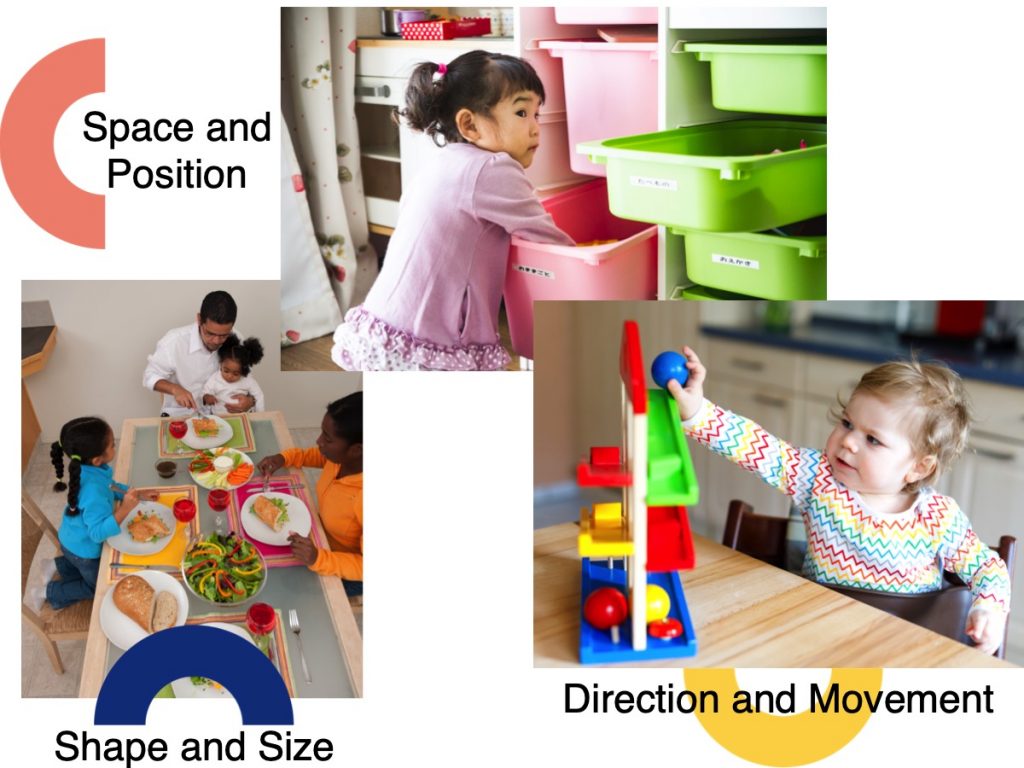
Spatial awareness includes understanding shape, size, space, position, direction, and movement. Children gain spatial awareness as they manipulate objects such as blocks, puzzles, and 2- or 3-dimensional shapes. They also learn about spatial relationships by moving through different environments.
A child may notice that the toy bin is on top of the rug, but the toys are inside the bin. This is space and position. It refers to the relationship between objects.
When out on a walk, talk about the direction you are going. Say, “We’re turning left to get to the playground.” At the playground, narrate your child’s movement. “You slid straight down the slide!” Direction and movement also refers to understanding the path of a moving object in space. For example, can you predict where a ball will go when you roll it?
You can teach children about shape and size by talking about objects at home and around town. At breakfast you might say, “Your placemat is a rectangle. It is bigger than Daddy’s plate. His plate is a circle.” With older children, ask them what looks different about the shapes instead. Shape awareness is an important skill and big part of early childhood. Let’s explore that further!
-
- Direction and movement
- refers to the path along which a person or object moves
- Shape awareness
- is the ability to recognize and identify shapes
- Space and position
- refers to the relationship between objects
- Spatial awareness
- includes understanding shape, size, space, position, direction, and movement
- Spatial language
- refers to words that describe the location of objects in space
- Spatial thinking
- is a set of mental skills that we use to reason about the shape, size, position, direction, and movement of objects